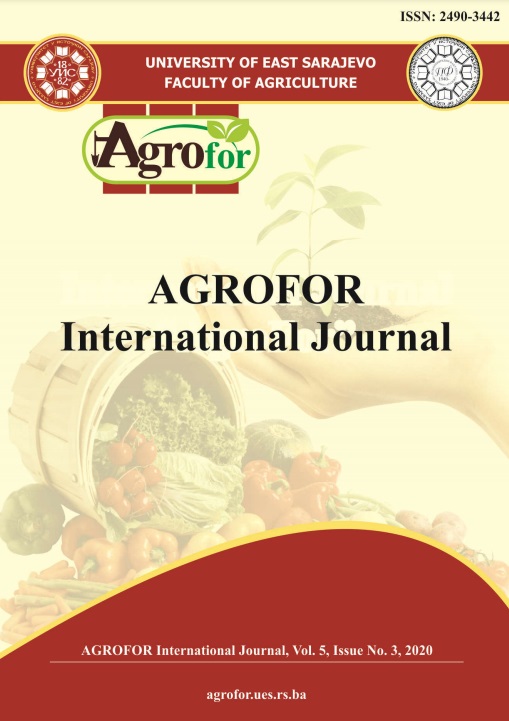LONG-TERM RELATIONSHIP BETWEEN OAK DECLINE AND SHRUB GROWTH DYNAMICS IN AN HUNGARIAN OAK FOREST, 1972-2017
DOI:
https://doi.org/10.7251/AGRENG2003047MAbstract
Long-term structural dynamics of shrub layer of temperate oak forest communities
were not extensively reported in published studies. The serious oak decline was
first reported in 1979-80 and nowadays 63.0% of canopy oak trees died in a forest
stand. The data were used to obtain (1) quantitative information on shrub layer
growth, including height (H) and shoot diameter (DSH) condition and basal area
(BA) values; (2) structural information on foliage cover rate of the shrub layer,
mean cover of some shrub species; (3) comprehensive description from the
ecological processes in the shrub layer in the last 45 years and our objective was
(4) to analyze the possible effects of oak decline on the shrub growth dynamics.
The following measurements were carried out in the 48 × 48 m plot: shoot height,
shoot diameter, basal area and foliage cover of each individuals in the high shrub
layer. Correlation analysis confirmed that significant positive relations were
between mean H, mean DSH of the dominant woody species (Acer campestre,
Acer tataricum and Cornus mas) and oak tree density between 1972 and 2017. The
decreasing oak tree density did not show detectable impact to the co-dominant
shrubs growth. There was a low significant association between number of oak
trees and basal area of high shrub layer. Finally, there was a statistically significant
interaction between mean cover of A. campestre and C. mas and oak trees. The
findings of the study indicate that forest responded to oak decline with significant
structural rearrangement in the shrub layer.

